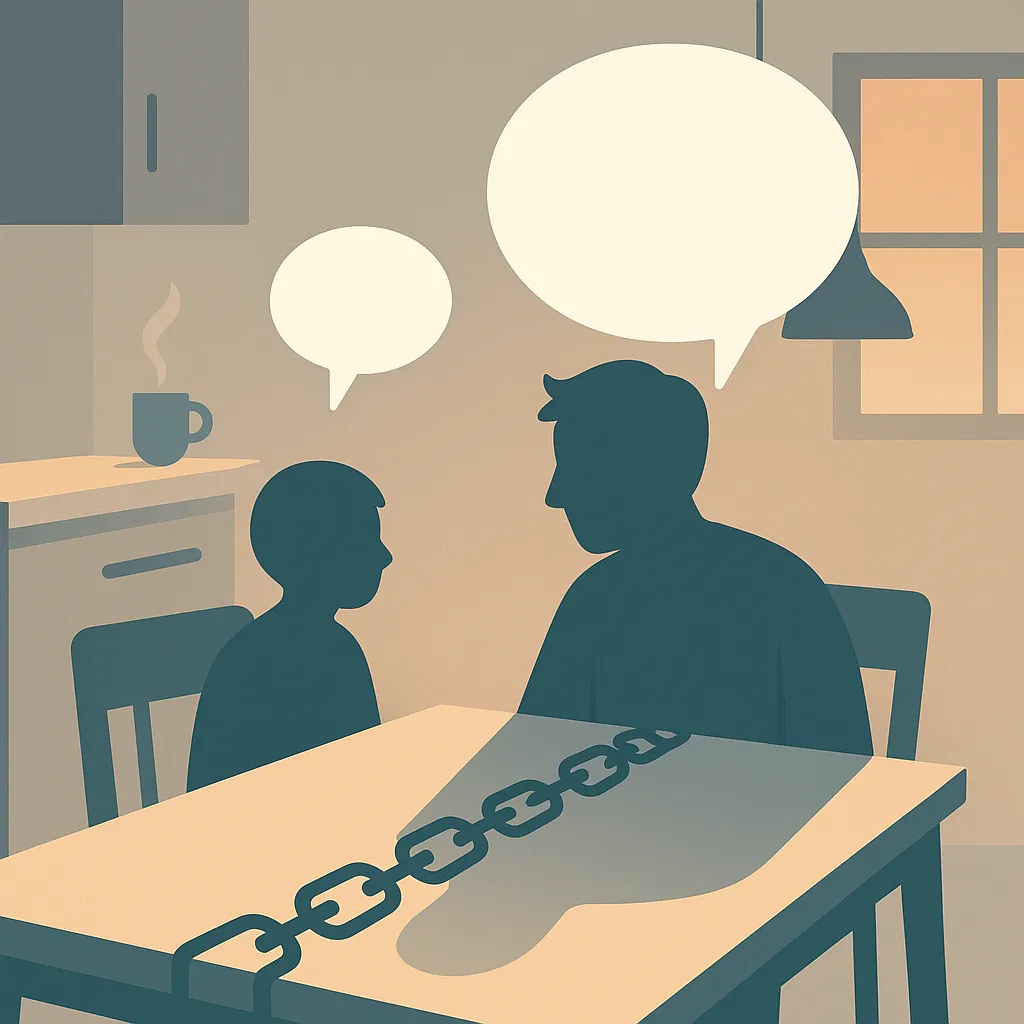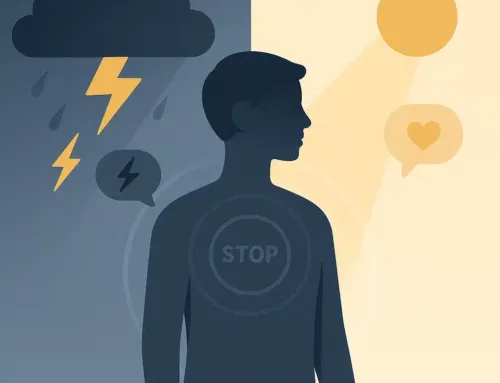
Approx. read time: 7.7 min.
Post: Negative Submissiveness in Families: 15 Signs & Fixes
When negative submissiveness in families becomes the norm, children learn that silence equals safety and approval. What looks like “keeping the peace” quietly rewires identity, boundaries, and future relationships. This guide explains how the pattern forms, how it shapes kids and sibling dynamics, and gives concrete steps to break it—without chaos or blame.
🔎 What Is Negative Submissiveness in Families?
Negative submissiveness in families is the habitual silencing of your needs, feelings, or boundaries to avoid tension or keep approval. It’s not compromise; it’s chronic self-erasure. Common signs:
-
One parent always yields—even on high-impact decisions.
-
Kids are shamed or punished for disagreeing.
-
“We don’t talk about that” becomes a family rule.
This pattern creates a power imbalance without overt shouting or visible conflict. Over time, the “quiet” can be just as damaging as chaos.
🫥 “Keeping the Peace” vs. Healthy Calm-Negative submissiveness in families
-
Negative peace: silence, walking on eggshells, pretending.
-
Healthy calm: respect + voice + problem-solving.
If calm requires self-abandonment, it’s not calm—it’s compliance. Negative submissiveness in families teaches kids that love = pleasing others, not authenticity.
👀 The Parental Blueprint: What Kids Absorb
Children don’t need a lecture to learn submissiveness; they watch it:
-
Silence looks like safety.
-
Compliance brings approval.
-
Needs seem “selfish,” boundaries feel “rude.”
Depending on temperament and birth order, one child may mirror the submissive role; another becomes controlling to avoid powerlessness. Both roles grow from the same soil.
👧👦 Sibling Dynamics: Mini Power Systems
Parental power patterns leak into sibling life:
-
A director sibling decides “how things go.”
-
A pleaser sibling defers, avoids, soothes.
-
Conflicts end by withdrawal, guilt, or manipulation—not dialogue.
Kids then carry these roles into school groups, teams, and later, romance.
🧠 Developmental Effects from Early Years to Teens
Early childhood: kids may suppress feelings to stay “good.”
Middle years: they become chronic helpers, people-pleasers, or micro-controllers.
Adolescence: withdrawal, perfectionism, risk-avoidance—or an angry over-correction—can appear.
Large literatures connect early home climate, adversity, and relationship templates with later mental and relational health. Adverse experiences in childhood (not only abuse; also ongoing fear, humiliation, or persistent invalidation) are linked to poorer adult health and relationship outcomes in a graded, dose-response fashion. CDC+2PMC+2
❤️ Attachment & Attraction Patterns in Adulthood
Attachment research shows that early patterns with caregivers guide how we bond, protest, and repair later. Insecure patterns (e.g., avoidant, anxious) are associated with predictable conflict cycles and intimacy struggles; secure attachment predicts better regulation and repair. PMC+2ScienceDirect+2
People raised with negative submissiveness in families often:
-
Feel drawn to controlling or emotionally distant partners (familiar “fits”).
-
Or flip into control to avoid vulnerability.
-
Struggle to name needs, ask directly, and tolerate healthy conflict.
Recent research links childhood trauma to lower romantic satisfaction, partly through attachment pathways—social support helps, but doesn’t erase the risk. Frontiers
🧩 Emotional + Cognitive Costs for Children
-
Low self-esteem: “My feelings don’t matter.”
-
Blurry boundaries: “Saying no hurts people.”
-
Conflict panic: disagreement = danger.
-
Emotion suppression: can impair regulation and intimacy later. PMC+1
🎓💼 School & Work: Voice, Agency, Leadership
Later on, the pattern can show up as:
-
Taking on unfair workloads.
-
Hesitating to ask for help, raises, or credit.
-
Freezing during conflict.
-
Over-apologizing and under-asserting.
The result: stalled growth—not from lack of talent, but from a learning history where speaking up felt unsafe. Negative submissiveness in families.
💞 Adult Relationships: Why Familiar Feels “Safe”
If you grew up reading the room to avoid trouble, predictable can feel safer than healthy. You may choose partners who let you stay small, or you may dominate to never feel small again. Both keep the cycle running—until you decide to replace familiar with functional. Findings continue to show links between childhood adversity and adult relationship health and mental health risks. PMC
🫢 Why It Often Goes Unnoticed-Negative submissiveness in families
Negative submissiveness hides because it’s quiet and often praised as being “easygoing,” especially under rigid gender scripts. Outsiders applaud the “nice” family; insiders feel an invisible leash. The lack of overt conflict is misread as health.
✅ Self-Check: Are These Patterns at Home?
-
You rehearse what to say to avoid reactions.
-
You apologize for having needs.
-
Disagreement triggers shame or dread.
-
You over-function; others under-function.
-
Kids mirror it: one dominates, one appeases.
If 3+ feel true, the climate likely rewards compliance over authenticity.
🔧 10 Home Fixes to Break the Cycle
-
Name the pattern (without blame): “We’ve been avoiding conflict by going quiet.”
-
Establish family rights: Everyone may say how they feel; everyone may say no.
-
One decision = many voices: Big decisions require input from all who are impacted.
-
Weekly 20-minute check-ins: “Wins, Worries, One Wish” around the table.
-
Feeling words on the fridge: Expand emotional vocabulary.
-
Micro-boundaries practice: One small, kind “no” per day.
-
Repair rituals: “Name it → own it → make it right → prevent repeat.”
-
Rotate leadership: Kids take turns leading simple plans (menus, outings).
-
Model disagreeing respectfully: “I see it differently, and I still care.”
-
Therapy if stuck: A family or couples therapist can help re-pattern communication.
For an accessible primer on boundaries for parents, see this short guide and exercises. PositivePsychology.com
🧘♀️ DBT “Wise Mind” for Families
DBT calls the balanced state between Emotion Mind and Reasonable Mind Wise Mind—acting from facts and felt values. Three family skills:
-
STOP skill (pause): Stop, Take a breath, Observe, Proceed mindfully.
-
Check the story: “Am I assuming danger—or is this discomfort?”
-
Opposite action: If silence is your habit, practice a short, kind statement.
Clear explainers on Wise Mind can help you teach this language at home. Dialectical Behavior Therapy+1
🗣️ Boundary Scripts (No Blame, More Clarity)
-
Preference: “I prefer we decide together when it affects both of us.”
-
Capacity: “I can help for 20 minutes, then I need to rest.”
-
Redirect: “I want to hear you. Let’s slow down so I can respond, not shut down.”
-
Repair: “I avoided answering. Next time I’ll say I need a pause.”
Teach kids short, respectful scripts: “Please stop. I don’t like that. I need space.” Normalize it as a life skill, not a punishment. (There’s even a kid-friendly boundaries trend reinforcing this language.) Parents
👨👩👧 Co-Parenting & Community Supports
-
Align on house rights: voice, choice, safety.
-
Loop in teachers/counselors if a child over-appeases.
-
Consider trauma-informed clinicians if there’s a history of ACEs. U.S. public-health guidance explains long-term impacts and the value of prevention and buffering. CDC
🛡️ Protective Factors & Repair Rituals
-
Warmth + structure (clear expectations).
-
Secure base behaviors: “I’m here; your feelings make sense; we can handle this.”
-
Frequent micro-repairs: small apologies, do-overs, gentle humor.
-
Model self-care: kids copy rest, boundaries, and saying no.
🗓️ 30-Day Family Reset Plan
Week 1 — Awareness:
-
Hold a 15-minute family meeting; name the pattern.
-
Post 10 feeling words; practice one check-in nightly.
Week 2 — Voice:
-
One small, kind “no” per person per day.
-
Parents model a respectful disagreement.
Week 3 — Boundaries:
-
Each person writes 3 “I statements” + one request.
-
Rotate a simple leadership task among kids.
Week 4 — Repair & Review:
-
Try the 4-step repair ritual twice.
-
Review what felt better; set one next-month target.
❓ FAQs-Negative submissiveness in families
Q1. Is negative submissiveness in families the same as being kind?
No. Kindness respects both people’s needs. Negative submissiveness erases one side to keep approval.
Q2. Can a quiet house still be unhealthy?
Yes. If quiet requires fear, guessing, or self-abandonment, it’s not healthy calm.
Q3. How do I know if my child is learning submissiveness?
Watch for over-apologizing, indecision, perfectionism, or panic when asked to choose.
Q4. Won’t giving kids a voice make them defiant?
Giving a bounded voice (voice + responsibility) increases cooperation and self-regulation.
Q5. What if one partner won’t engage?
Set your own respectful boundaries, model healthy conflict, and consider couples therapy.
Q6. Is this linked to trauma or ACEs?
Chronic invalidation and fear can compound ACE-like effects and predict adult health and relationship risks. PMC
Q7. How does DBT help?
DBT skills teach families to pause, name emotions, and act from Wise Mind—not fear or impulse. Dialectical Behavior Therapy
Q8. What if I overcorrect and become controlling?
Aim for assertive, not aggressive: clear requests, shared decisions, and willingness to repair.
🎯 Conclusion: From Silence to Voice
Negative submissiveness in families looks gentle on the surface but reshapes children’s inner maps—how they value themselves, set boundaries, and choose partners. The good news: families can change. Name the pattern, give every member a voice, practice small “no’s,” use DBT’s Wise Mind, and make repair a ritual. Calm that includes everyone’s truth is the only calm that lasts.
🧭 Sources & References
-
CDC — About Adverse Childhood Experiences (ACEs). CDC
-
Cassidy, J. et al. Attachment theory overview and consequences. PMC
-
Frontiers in Psychiatry (2024) — Childhood trauma, attachment, and romantic satisfaction. Frontiers
-
NIH/PMC — ACEs and adult health outcomes; emotional maltreatment and adult relationships. PMC+1
-
DBT Wise Mind explainers (skills and concept). Dialectical Behavior Therapy+1









